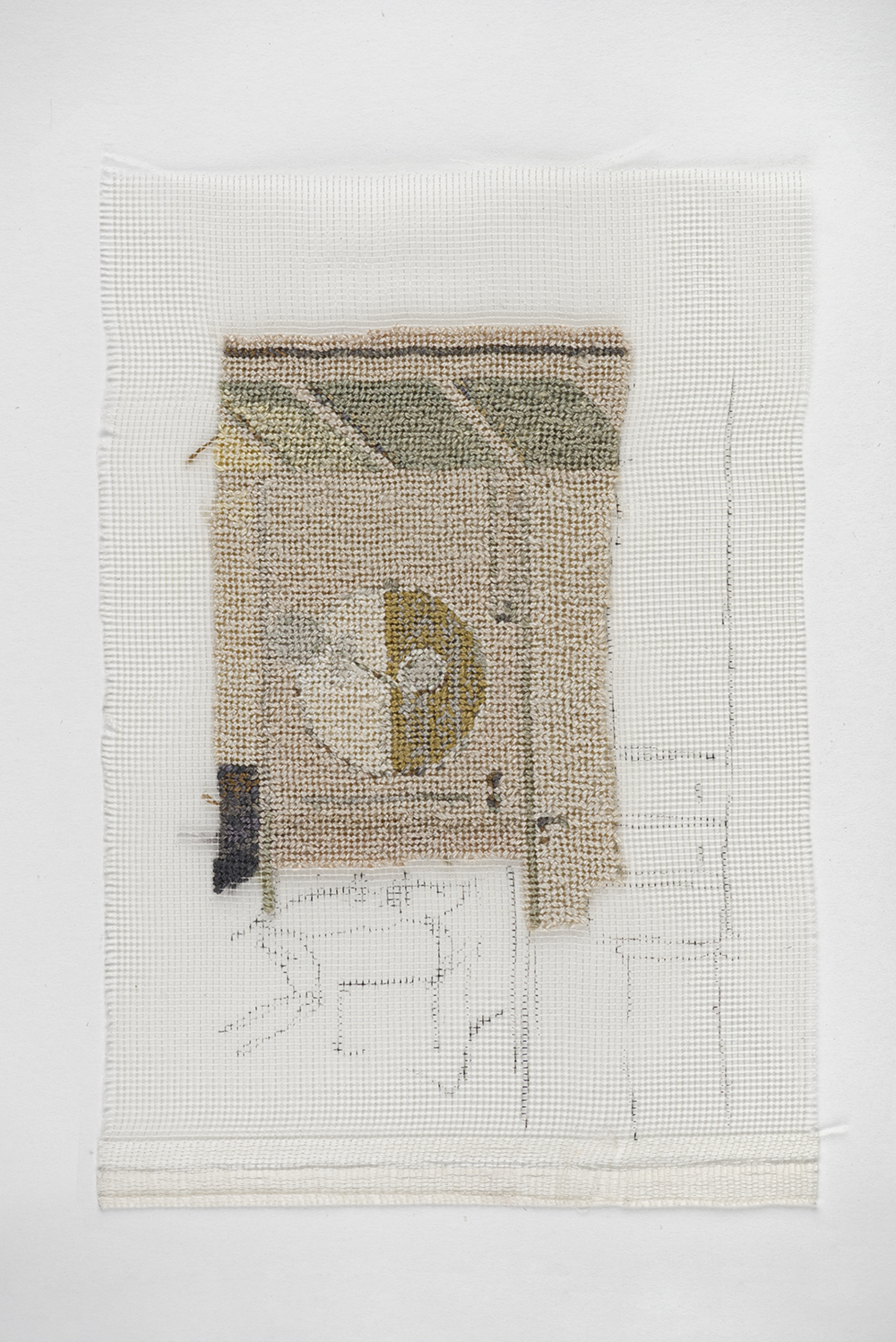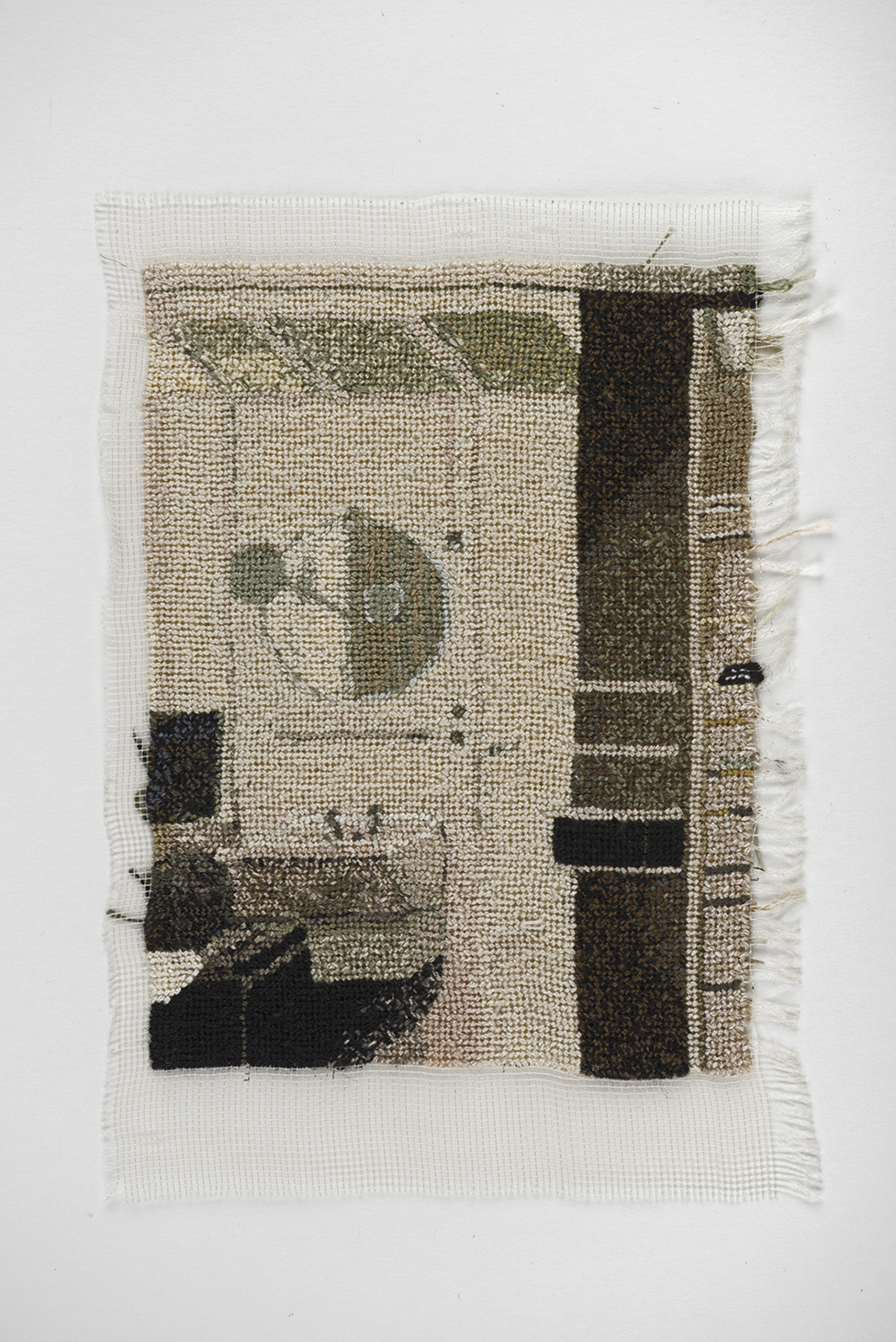Camino primitivo Narelle Jubelin From November 8 to December 14 Santiago
Front and back
Natalia Poncela
The intensity with which we tread the earth as we move. The beats of our march. The way we modify our rhythm. The tracing of the path towards the concretion of an end.
Religions have succeeded in transforming that walk into a rite; that beating into a ceremony; that rhythm into procession, and that determination into a pilgrimage.
"Thinking is a journey before becoming a piece of work", Henri Michaux wrote. Walk unwalked roads. Concepts spin and then unravel. Construct and destroy with ruminant footsteps.
In her urban journeys, Narelle Jubelin (Sydney, 1960) has recovered rubble, small constructive fragments that she reactivates, for the first time, in this primitive Camino. It’s a project that dialogues and coexists with OMEN [O monte é noso, 2018] by Rubén Santiago (Lugo, 1974) an exhibition that preceded this new project by Jubelin at Nordés gallery]. The already existing complicity between Narelle and Rubén, visible in other projects such as Suelo y Pared (ABM Confecciones, 2018), offers us here a new chapter.
OMEN is integrated into the ceiling, taking on the space and shape of an ornament: the rosette. A circular moulding containing a relief marked by a cyclical reading narrative, in which we recognise iconographies related to historical hegemonic and coercive powers. A story focused on a specific conflict: the struggle of the community of Salcedo (Pontevedra) against the appropriation of their land, which historically has been a common land.
By choosing a table and placing it under this rosette, Narelle Jubelin creates a reference to a domestic and intimate space layout; and by placing on its surface those urban findings together with works from the Shumakom series (2002), she makes me think of Paul Virilio: "As essential as water or the air we breathe, streets are the corridors of the soul and the dark trajectories of memory". In City of Panic (2007), Virilio analyses the transformations of our society's spatiotemporal relationships along with different elements present in warlike conflicts throughout history. Mass: that battlefield where the confrontation is direct (walls, armour, armies). Energy: those war technologies perfected to take distance (catapults, bombs, missiles). Information: a no-place to deploy instant communication (Infowar).
And then, underneath OMEN’S scenes of the reliefs (military maneuvers, appropriations and occupations), our look leads us towards the words of a statement: the Primitive Way.
Etymology associates the word camino with a Celtic-Latin term whose meaning is passage. Against Roman roads, the roads marked parallel communication paths,
pre-existing and alternative itineraries, almost as a form of resistance. The first known pilgrimage route to Compostela was developed through both ways, following existing passages and former Roman roads.
With the discovery of a campus stellae with a tomb attributed to an apostle, it emerges the primitive Way [one of the seven current Jacobean ways], which the King Alfonso II (791-842) walks for the first time, a way promoted by Bishop Teodomiro, thus legitimating this medieval invention which should be included within that medieval tradition of relics whose aim is to politically and spiritually consolidate and integrate this area.
The intentionality of this account involves Jerusalem in this finding by signalling as the origin of the apostle’s body transfer.
It was in that city that the series Shumakom (Artists' House, 2002) was first shown. This term, composed of two words (Hebrew and Arabic) enunciates a 'nowhere', an encounter, a reconciliation.
Shumakom was exhibited in Jerusalem on a continuous shelf that ran along the walls of the exhibition space, located at the height of the artist's shoulder, allowing a close and parallel reading of the embroideries that make up this series, which were exhibited within small silver frames. During the time that the exhibition remained open, the void of those frames was filled with the works that Jubelin was sending, thus allowing for the coexisting of empty frames with others already filled. Likewise, in this primitive Way, next to six 'filled' frames, there will be one that will remain empty and then filled during the exhibition.
The works are made in petit point, an embroidery technique Narelle Jubelin has been using for the last three decades, as it is the case with past works such as Mírame a los ojos (1994) included in the famous Cocido y crudo exhibition (MNCARS, 1995).
Choosing a technique such as embroidery, sewing or weaving, which have been traditionally associated to domestic modes of production and women’s work, defines artistic procedures and they thus acquire new resignifications.
In Shumakom's artistic process there is a precise and impeccable invoice, where front and back are equally important, where specific and contemporary reformulations of the pictorial medium are obvious, together with our own search that lead us to past and foreign memories, such as the work of the architect and designer, Eileen Gray (1878-1976): Satellite Mirror (1926-27). An object designed for hes E-1027 house (1926-1929), a bathroom mirror that included a central lamp with which a homogeneous illumination was obtained, without shadows. A mirror that incorporated an adjustable
arm with another convex magnifying mirror capable of making our backside visible. Front and back in the same plane.
The history of this Côte d'Azur house offers new readings of these embroideries that Jubelin makes from Satellite Mirror, an object created for the guest room. Gray built this house on behalf of architect Jean Badovici, her then partner. Years later, when Eileen Gray moved out, Badovici invited Le Corbusier to intervene by filling that tidy rationalist constructive aesthetic with eight murals that would be disseminated in a well-known photographic series in which any reference to its architect was omitted.
Jubelin chooses this domestic piece, this articulated mirror, repairing its specificities, in its interrelation with this domestic space where the staircase was the nucleus where the rest of the domestic spaces pivoted from.
There is an interesting relationship between the mirror and the pilgrimage, between the 'magical' function of this object and the rituals. Relationships that are framed in religious devotion in places of worship where it was difficult to approach relics; through the use of the mirror, pilgrims received the desired sacred image.
The silver frames chosen for Shumakom specularly integrate our body, and even our look, if we decide to sit in the available chair. This specular image emerges as a self-revealing element. The mirror virtually opens its space to the surface, acting as a utopia, following Michel Foucault, because it is a space empty of space. But also as heterotopia, as that mythical and real impugnation of the space we inhabit.
Thus, this primitive Way that Narelle Jubelin traces, which through words and works establishes a link with other projects, unravels a discontinuous and dense thread between different spaces, communal and sacred, such as Jerusalem and Compostela, and intimate, domestic and specular, as in the E-1027 house.







